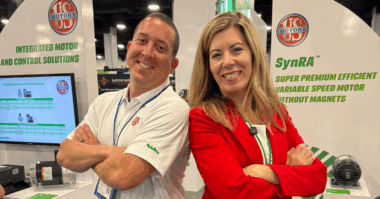As 2014 comes to a close, we look back at the top articles EmpoweringPumps.com used to connect, inform, and educate the pump industry. Incase you missed these popular articles, I have created a top ten list for your review.
The Differences Between Centrifugal Pumps Vs. Positive Displacement Pumps
Across the industry, professionals are constantly working to develop and implement the latest in pump and valve technology. Recently, EmpoweringPumps.com has been taking on the topics of sustainability and new advancements. But for those who need a brush up on pump basics, we thought it would be a good time to discuss the differences between centrifugal and positive displacement pumps.
Some Effects of Operating Pumps Away from Best Efficiency Point
The Best Efficiency Point, or BEP, is a term that is used quite often in pump vernacular. Like the terms Shut-off (SO) or Run-out (RO), the Best Efficiency Point identifies an operating region or point along the pump performance curve. The Best Efficiency Point is defined as the flow at which the pump operates at the highest or optimum efficiency for a given impeller diameter. When we operate a pump at flows greater than or less than the flow designated by the BEP, we call this “operating pumps away from the Best Efficiency Point”. Therefore, operating a pump at flows higher or greater than the flow at the BEP is called “operating to the right of the BEP”, and conversely, operating a pump at flows lower or less than the flow at the BEP is called “operating to the left of the BEP.”
Coupling or Shaft Runout
On rotating machinery, runout is defined as the degree to which a shaft or coupling deviates from true circular rotation. Every shaft or coupling has a center or rotation, or centerline. Any stray from concentricity is considered runout. If runout is severe, it can cause many problems with equipment, such as: Excessive vibration, Seal wear, Bearing damage.
Preventing Water Hammer from Damaging Pumps and Pipes
Water hammer occurs when the flowrate of fluid in the pipe changes rapidly. It is also known as “surge flow”. It can cause very high pressures in pipes, very high forces on pipe supports, and even sudden reversals of flow. It can cause burst pipes, damaged supports and pipe racks, and leakage at joints.
Design and Application Factors Affecting NPSH Margin
A direct correlation exists between pump reliability and Net Positive Suction Head (NPSH) margin. To achieve acceptable pump performance, reliability and service life, while covering for uncertainties associated with available NPSH, an adequate NPSH margin must be established, especially for today’s higher speed, higher energy density pumps. Inadequate NPSH margin may affect pump head, noise, and vibration – all leading to reduced pump service life and higher costs.
Pump Stations at the 2014 Sochi Winter Olympics
I was really thrilled with the opportunity to interview Mark Meadows Co-Owner of the global pump industry company Torrent Engineering & Equipment who has been hard at work managing the development and provisioning of the high pressure pump stations for the 2014 Winter Olympics in Sochi, Russia since 2008.
A Coupling Inspection
One thing that should never be left out of the shaft alignment process is a good coupling inspection. Because if a coupling or coupling insert is excessively worn or damaged, it should not be aligned until the coupling is repaired or replaced.
Choosing a Flexible Pump Connector
How do you choose the best flexible pump connector to join a pump and pipe? In fact, why are they needed at all? Read on for a quick overview. A flexible connector is needed because any number of pump problems can result from the excessive pump nozzle loads without one. Nozzle loads from pipe misalignment, thermal expansion, and other factors can cause seal leakage, coupling problems, bearing problems, and more. The right flexible pump connector can eliminate the problems caused by these excessive nozzle loads.
Hydraulic Institute’s New Test Standard for Rotodynamic Pumps
The Hydraulic Institute’s new test standard, ANSI/HI14.6, provides the pump community with a globally accepted standard for testing rotodynamic pumps, of the centrifugal, mixed flow, and axial types. It supersedes two test standards: ANSI/HI 1.6, for Centrifugal Pumps and ANSI/HI 2.6 for Vertical Pumps. The new standard features significant changes in test acceptance requirements and in educational content and contains “must-know” requirements for anyone involved with hydrostatic or performance testing of pumps.
PumpTurbo Symposia: Tapping into the Energy Capital of the World
Empowering Pumps and Empowering Valves recently hit the road and traveled on our yearly trip to Houston for the 43rd Turbomachinery and 30th International Pump Users Symposia (Pump & Turbo 2014) held at the George R. Brown Convention Center. Built on a history of success, the Symposia serves as a premier training and networking opportunity for industry professionals and is the only industry event organized by users for users.
I am so excited about the year ahead. Please continue to send me your news and stories to help us keep the pump industry informed on the latest trends and best practices.
In closing, I would like to give a special thanks to our team of content writers who helped create the #1 article of 2014.




